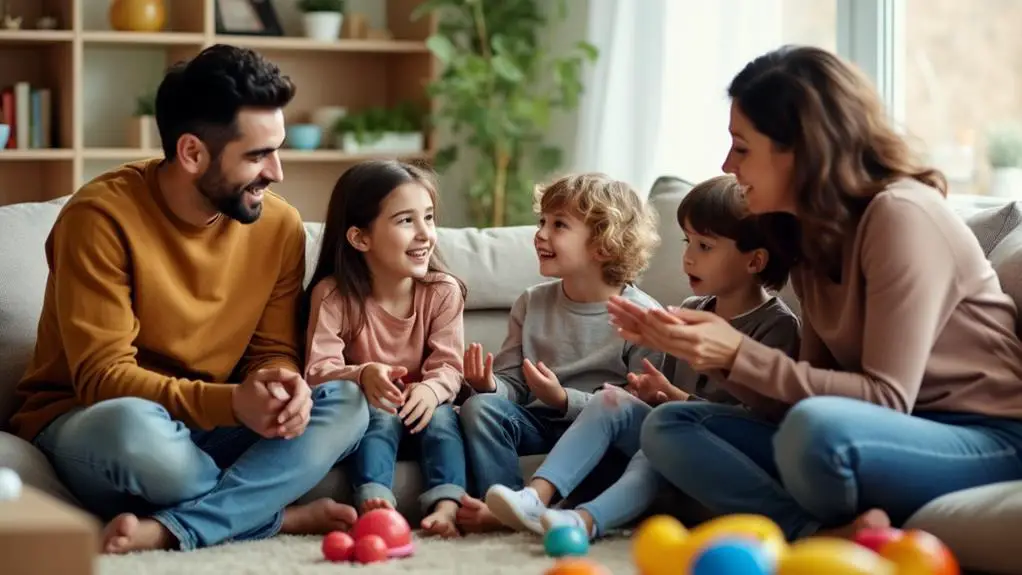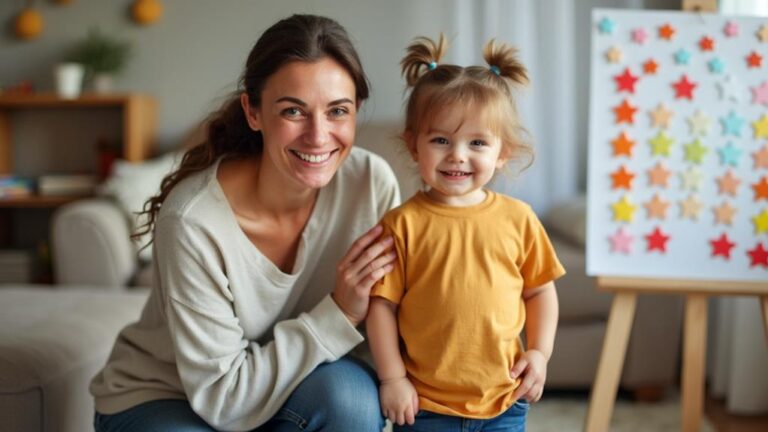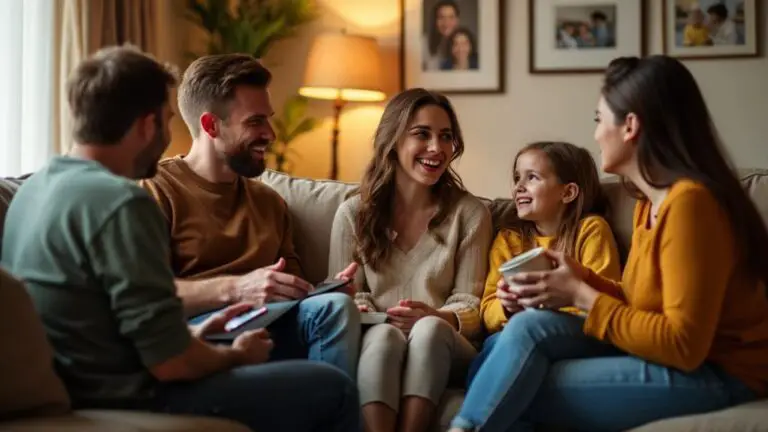Communicating Effectively With Your Children
As a parent, I've learned that effective communication with my children is both an art and a science. It's not just about talking; it's about creating a connection that fosters trust and understanding. I've discovered that each child has their own unique way of expressing themselves, and it's up to me to decode their language. By adapting my approach and truly listening, I've opened doors to conversations I never thought possible. But mastering this skill isn't easy, and the challenges evolve as my children grow. So how can we navigate the complexities of parent-child communication in a way that strengthens our bonds and helps our children thrive?
Key Takeaways
- Practice active listening by giving full attention and using open-ended questions to encourage deeper expression.
- Tailor your communication style to match your child's, considering their age and individual preferences.
- Create a safe, judgment-free environment that fosters trust and open dialogue.
- Use age-appropriate language and conversation strategies to ensure understanding and engagement.
- Observe non-verbal cues and validate emotions to enhance comprehension and strengthen your relationship.
Understanding Your Child's Communication Style
When it comes to communicating with our children, one size doesn't fit all. I've learned that understanding my child's individual communication style is essential for building a healthy relationship. Some kids are chatterboxes, while others prefer quieter expressions and body language.
By practicing active listening and observing how my child interacts, I can adapt my communication techniques to suit their needs.
I've found that creating quiet time together can encourage my child to open up without feeling pressured. It's important to be aware of their comfort level when discussing emotions, respecting their boundaries and readiness.
Whether it's through storytelling, play, or direct questioning, I tailor my approach to match their style. By recognizing and honoring their unique way of communicating, I'm fostering positive communication and strengthening our bond.
Active Listening Techniques
Active listening is a cornerstone of effective communication with children. When I practice active listening, I give my full attention to my child, making eye contact and minimizing distractions. This creates a supportive environment where they feel heard and valued.
I encourage elaboration by asking open-ended questions like "Tell me more about…" which helps my child express their thoughts and feelings more fully. By rephrasing their statements, I show understanding and validate their emotions, boosting their confidence in communicating.
I also pay close attention to non-verbal cues, such as facial expressions and body language, to better understand their emotional state. I make a conscious effort to avoid interruptions, allowing my child to finish their thoughts. This illustrates respect and encourages open dialogue, fostering a stronger parent-child relationship.
Age-Appropriate Conversation Strategies

In light of children's evolving communication abilities, adapting conversation strategies to their age is essential. For infants, I respond to their cries and coos, talking frequently about various topics to support early language development.
With toddlers, I'm a good listener, giving them time to express themselves and using simple language.
For preschoolers, I encourage storytelling and use full sentences, fostering imaginative play and discussions about their experiences.
When interacting with school-age children, I recognize their written words and engage in deeper conversations about their interests.
With adolescents, I'm sensitive to their experiences, providing a balance of independence and support.
Building Trust Through Open Dialogue
Building trust with children through open dialogue is a cornerstone of effective communication. I've found that taking the time to engage in regular conversations with my kids strengthens our relationship. I love to hear about their day during meals or car rides, giving them my full attention. This consistent communication helps children feel secure and valued.
Active listening is essential when communicating with children. I make sure to validate their emotions and show that I understand their perspective. By encouraging them to share their thoughts and ideas, I'm fostering their autonomy and self-worth.
I've noticed that this open approach creates a safe space where my kids feel comfortable expressing themselves without fear of judgment. Ultimately, these strategies help children develop trust in me as their parent and in themselves.
Conclusion
I've learned that effective communication with my children is an ongoing journey. By understanding their unique styles, practicing active listening, and adapting my approach to their age, I'm fostering a supportive environment. I'm committed to validating their feelings and maintaining open dialogue, which strengthens our bond. As I continue to refine these skills, I'm confident that I'm empowering my children to express themselves freely and building a foundation of trust that will last a lifetime.







